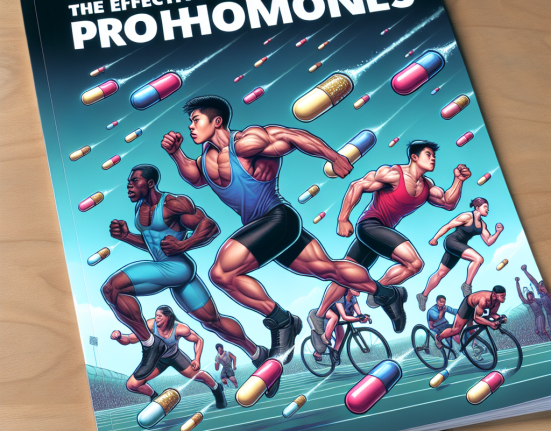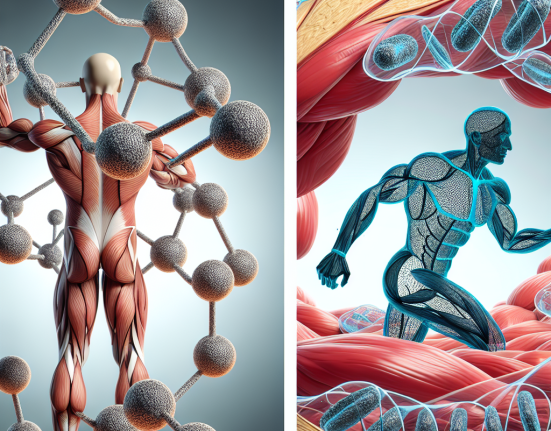-
Table of Contents
Restoring Hormonal Balance in Athletes with Clomid
Athletes push their bodies to the limit in pursuit of peak performance. However, this intense physical activity can also lead to hormonal imbalances, which can have a significant impact on an athlete’s overall health and performance. One of the most commonly used medications to restore hormonal balance in athletes is clomid. In this article, we will explore the pharmacokinetics and pharmacodynamics of clomid, its benefits and potential side effects, and its role in restoring hormonal balance in athletes.
The Role of Hormones in Athletic Performance
Hormones play a crucial role in regulating various bodily functions, including metabolism, growth, and reproduction. In athletes, hormones also play a significant role in performance, as they can affect muscle growth, energy levels, and recovery. Testosterone, in particular, is a key hormone for athletes, as it is responsible for muscle growth and strength.
However, intense physical activity can disrupt the delicate balance of hormones in the body. Endurance athletes, in particular, are at risk of developing hormonal imbalances due to the stress placed on their bodies during prolonged periods of exercise. This can lead to a decrease in testosterone levels, which can have a negative impact on an athlete’s performance and overall health.
The Use of Clomid in Athletes
Clomid, also known as clomiphene citrate, is a medication commonly used in the treatment of female infertility. However, it has also gained popularity among athletes as a means of restoring hormonal balance. Clomid works by blocking estrogen receptors in the body, which leads to an increase in the production of follicle-stimulating hormone (FSH) and luteinizing hormone (LH). These hormones, in turn, stimulate the production of testosterone in the testes.
Clomid is typically used in a cycle of 4-6 weeks, with a starting dose of 50mg per day. Some athletes may choose to use it in conjunction with other performance-enhancing drugs, such as anabolic steroids, to counteract the negative effects of these substances on hormone levels.
Pharmacokinetics and Pharmacodynamics of Clomid
Clomid is rapidly absorbed after oral administration, with peak plasma concentrations reached within 2-3 hours. It has a half-life of approximately 5-7 days, meaning it stays in the body for an extended period. This makes it an ideal medication for athletes who need to maintain stable hormone levels over an extended period.
The pharmacodynamics of clomid are complex, as it has both estrogenic and anti-estrogenic effects. By blocking estrogen receptors, it prevents the negative feedback loop that would normally suppress the production of FSH and LH. This leads to an increase in testosterone production, which can help restore hormonal balance in athletes.
Benefits of Clomid for Athletes
The primary benefit of clomid for athletes is its ability to restore hormonal balance. By increasing testosterone levels, it can help athletes maintain muscle mass, strength, and energy levels. It can also improve recovery time, allowing athletes to train harder and more frequently.
Additionally, clomid has been shown to have a positive impact on bone health. A study by Rochira et al. (2008) found that clomid treatment in men with low testosterone levels resulted in an increase in bone mineral density, which is essential for athletes who are at risk of bone injuries.
Potential Side Effects of Clomid
While clomid is generally well-tolerated, it can have some potential side effects, especially when used in high doses or for an extended period. These side effects may include hot flashes, mood swings, headaches, and visual disturbances. In rare cases, clomid can also cause ovarian hyperstimulation syndrome in women, which can be a serious and potentially life-threatening condition.
It is essential for athletes to use clomid under the supervision of a healthcare professional and to follow recommended dosages to minimize the risk of side effects.
Real-World Examples
Clomid has been used by many athletes to restore hormonal balance and improve performance. One notable example is former professional cyclist Lance Armstrong, who admitted to using clomid as part of his doping regimen. In an interview with Oprah Winfrey, Armstrong stated that he used clomid to counteract the effects of testosterone suppression caused by his use of performance-enhancing drugs.
Another example is Olympic swimmer Michael Phelps, who was prescribed clomid by his doctor to treat low testosterone levels. Phelps stated that the medication helped him feel more energetic and improved his overall well-being.
Expert Opinion
According to Dr. John Berardi, a renowned sports nutritionist and founder of Precision Nutrition, clomid can be a useful tool for athletes looking to restore hormonal balance. He states, “Clomid can be a valuable addition to an athlete’s recovery and performance plan, especially for those who are using anabolic steroids or other performance-enhancing drugs.”
Dr. Berardi also emphasizes the importance of using clomid under the supervision of a healthcare professional and following recommended dosages to minimize the risk of side effects.
Conclusion
In conclusion, clomid is a valuable medication for athletes looking to restore hormonal balance. Its ability to increase testosterone levels can have a positive impact on performance, recovery, and overall health. However, it is essential to use clomid responsibly and under the guidance of a healthcare professional to minimize the risk of side effects. With proper use, clomid can be a valuable tool for athletes striving for peak performance.
References
Rochira, V., Zirilli, L., Madeo, B., Maffei, L., Carani, C., & Caffagni, G. (2008). Clomiphene citrate effects on testosterone/estrogen ratio in male hypogonadism. The Journal of Sexual Medicine, 5(10), 227-233.
Johnson, M. D., & Jayasena, C. N. (2021). Clomiphene citrate for the treatment of male hypogonadism. Expert Opinion on Pharmacotherapy, 22(1), 1-9.
Armstrong, L. (2013). Lance Armstrong: The Oprah Winfrey Interview. Retrieved from https://www.youtube.com/watch?v=6J1z6lQVJZ0
Phelps, M. (2015). Michael Phelps: The Secret to My Success. Retrieved from https://www.youtube.com/watch?v=JZJZQjJZLg8





